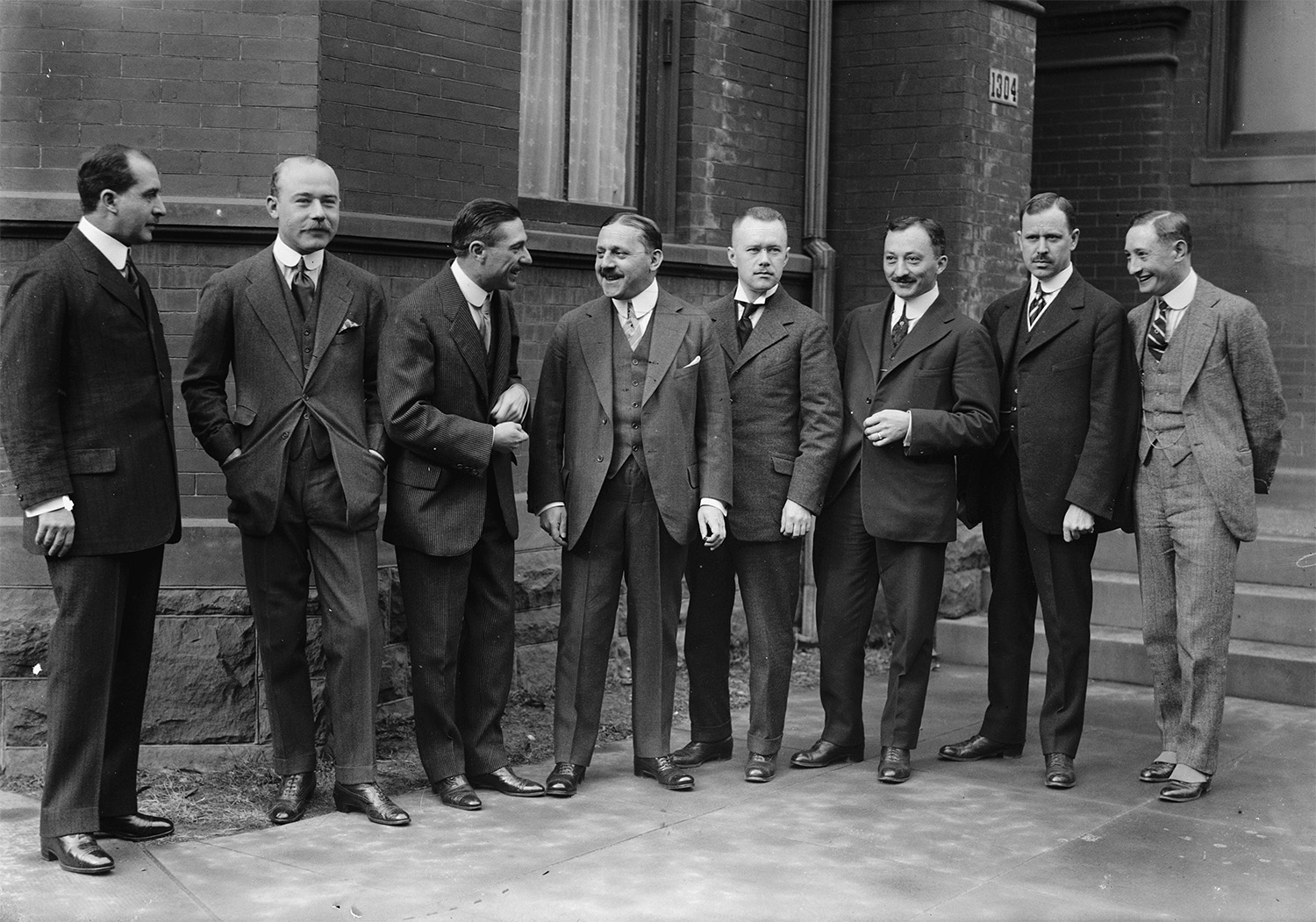Austria-Hungary and the United States at War, 1914/17–1918
World War I quickly stopped the era of mass migration from the Habsburg lands to the U.S. President Woodrow Wilson committed the U.S. to a policy of neutrality in the war in Europe, when it broke out in July 1914. Due to the Dual Alliance Austria-Hungary fought on the side of Germany, and thus, was pulled more deeply into the war vis-à-vis the U.S. when Germany started to sink enemy ships to counter the British blockade of the continent. When the Lusitania was sunk in May 1915, Wilson threatened to break relations with Germany. On November 19, the German U-38, sailing under the “Austrian” flag, sunk the Italian passenger ship SS Ancona in the Mediterranean killing 200 people. Austria received a stern protest from the U.S.
German submarine U-38 was sailing under Austrian flag in 1915 when it torpedoed and sunk the Italian passenger liner SS Ancona, killing 200 people, among them nine Americans.
Undated photograph of U-38 captioned “In safe water. Refreshing bath of air in the morning after exhausting night-cruise.”
Wikimedia
At this time, Austria-Hungary no longer had an ambassador in Washington. Konstantin Dumba was declared persona non grata in September 1915, after he had been accused of sabotage in the American munitions industry and espionage. President Wilson never received his successor Count Tarnowski. When the U.S. declared war on the Dual Monarchy in December 1917 (half a year after going to war with Germany over its unrestricted submarine warfare), the United States and Austria-Hungary no longer had official communications with one another. The American ambassador Frederick Penfield had been recalled in the fall of 1915 too. Wilson declared war on the Dual Monarchy since he felt they were lackeys of the Germans.
American military forces never really clashed with the armies of Austria-Hungary, who fought most of their engagements with the Russians in the East, the Serbs in the Balkans, and the Italians high in the Alps. Only late in the war did Austria-Hungary send some infantry divisions to the Western front. American volunteer ambulance drivers such as the writer Ernest Hemingway encountered “Austrian” troops. He was wounded and wrote about his experiences in his novel A Farewell to Arms.
Gallery - click to enlarge:
Source: Kurt Bednar, Der Papierkrieg zwischen Washington und Wien 1917/18. Innsbruck: StudienVerlag, 2017.



